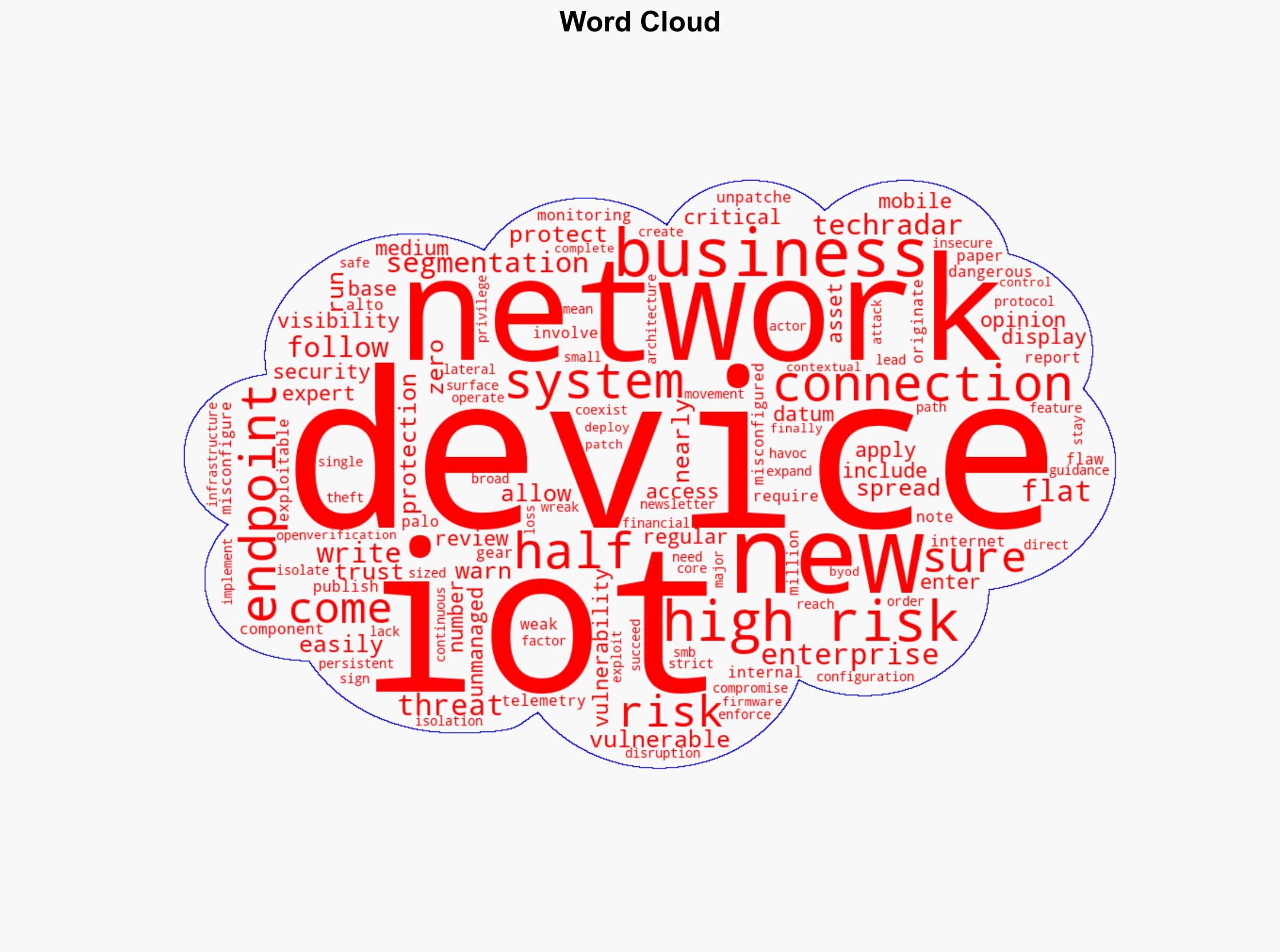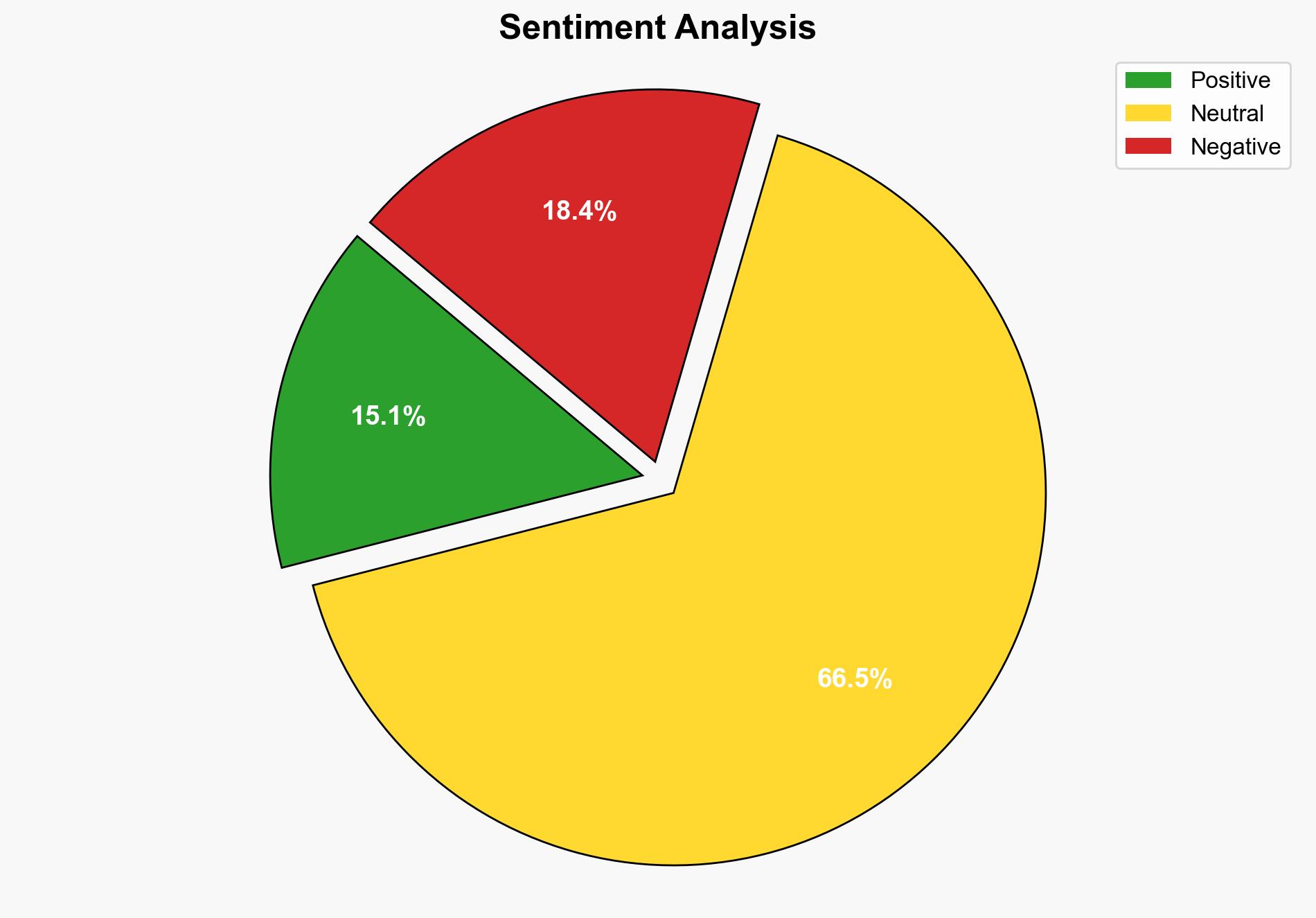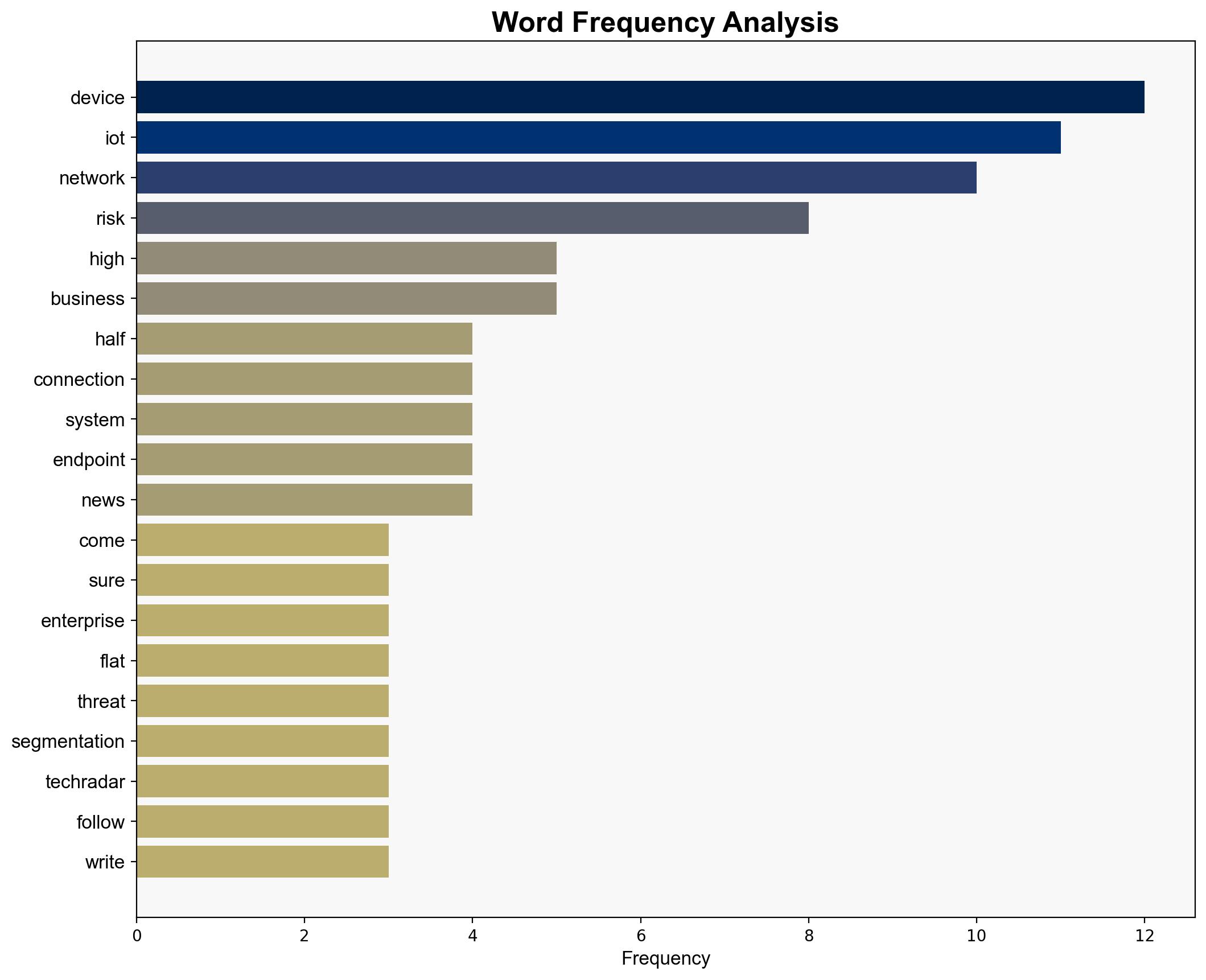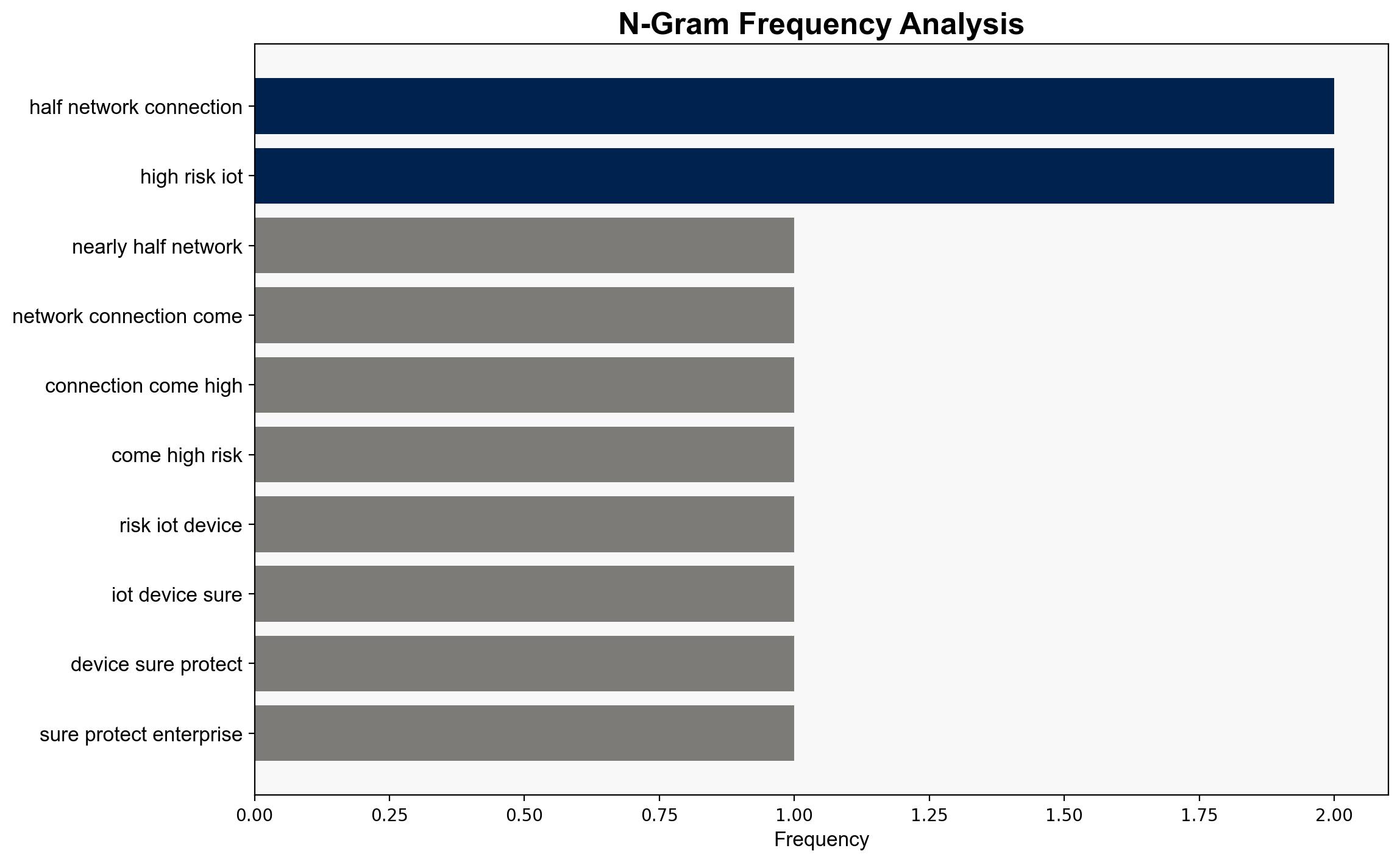Nearly half of network connections come from high-risk IoT and IT devices – so make sure you’re protected – TechRadar
Published on: 2025-10-29
Intelligence Report: Nearly half of network connections come from high-risk IoT and IT devices – so make sure you’re protected – TechRadar
1. BLUF (Bottom Line Up Front)
The most supported hypothesis is that the prevalence of high-risk IoT and IT devices in network connections significantly increases the vulnerability of enterprise networks, necessitating immediate and comprehensive security measures. Confidence level: High. Recommended action: Implement network segmentation, zero trust architecture, and continuous endpoint monitoring to mitigate risks.
2. Competing Hypotheses
1. **Hypothesis A**: The high percentage of network connections from high-risk IoT and IT devices is primarily due to widespread misconfiguration and lack of security protocols, making networks inherently vulnerable.
2. **Hypothesis B**: The reported vulnerability is overstated, and the actual risk is mitigated by existing security measures and the inherent resilience of enterprise networks.
Using the Analysis of Competing Hypotheses (ACH) 2.0, Hypothesis A is better supported by the evidence provided, such as the lack of network segmentation and the presence of exploitable flaws in devices.
3. Key Assumptions and Red Flags
– **Assumptions**: It is assumed that all enterprises operate with similar levels of network security and that IoT devices are uniformly vulnerable.
– **Red Flags**: The report may not account for enterprises that have already implemented advanced security measures, leading to potential overgeneralization.
– **Blind Spots**: The analysis does not consider the potential for rapid advancements in IoT security technologies that could mitigate current vulnerabilities.
4. Implications and Strategic Risks
The persistence of high-risk IoT connections could lead to increased cyberattacks, data breaches, and financial losses. The lack of segmentation allows for lateral movement within networks, escalating the impact of any single exploit. Economically, this could result in significant costs for businesses in terms of both direct losses and increased security expenditures. Geopolitically, nations with high IoT adoption may face heightened cyber threats, impacting national security.
5. Recommendations and Outlook
- Implement strict network segmentation and zero trust architecture to isolate high-risk devices.
- Enhance endpoint monitoring and apply regular vulnerability patches to IoT devices.
- Scenario-based projections:
- Best Case: Rapid adoption of advanced security measures significantly reduces network vulnerabilities.
- Worst Case: Continued neglect of IoT security leads to widespread cyberattacks and economic disruption.
- Most Likely: Gradual improvement in security practices mitigates some risks, but vulnerabilities persist.
6. Key Individuals and Entities
– Palo Alto Networks: Provided the telemetry data and analysis.
– Sead Fadilpašić: Author of the TechRadar article.
7. Thematic Tags
national security threats, cybersecurity, counter-terrorism, regional focus





